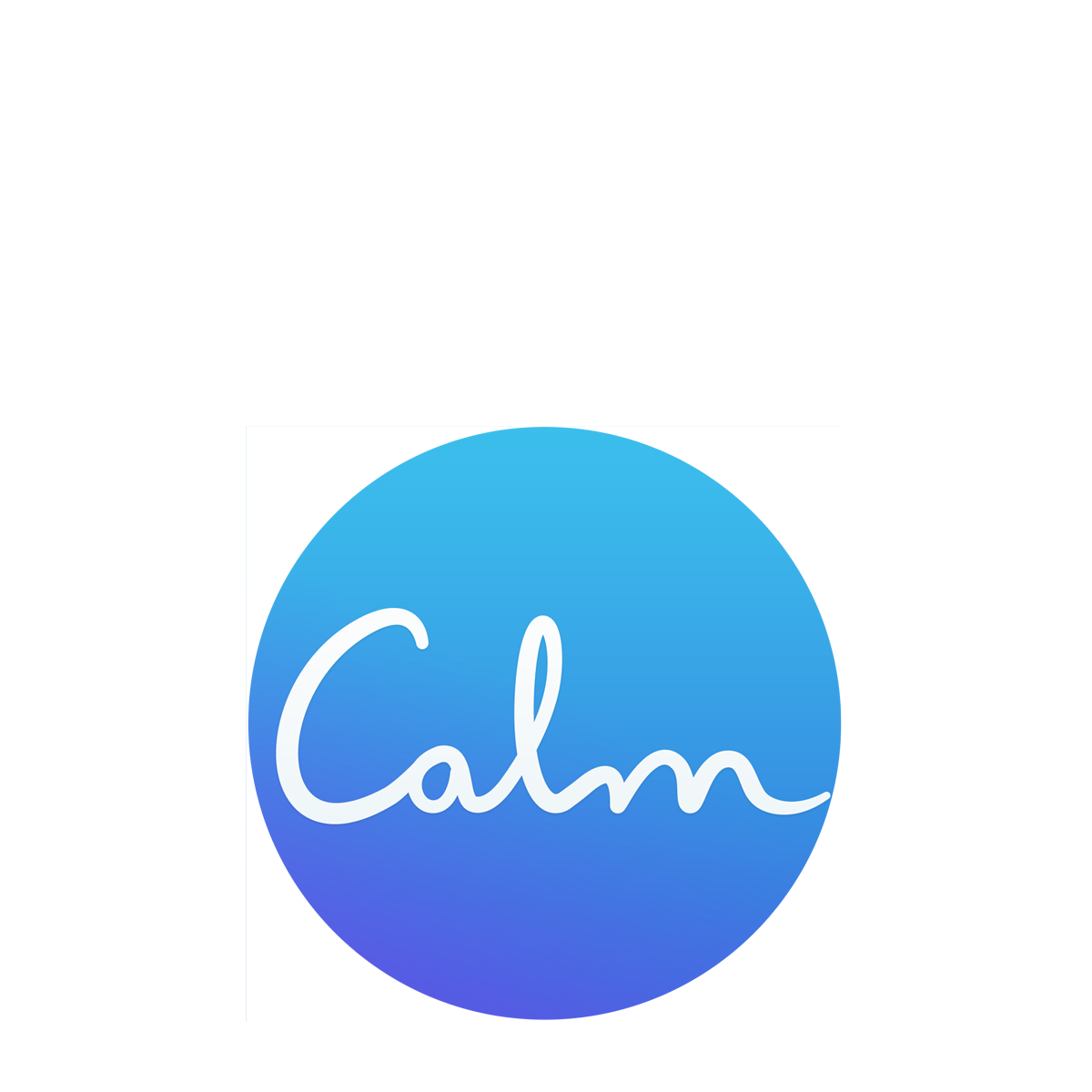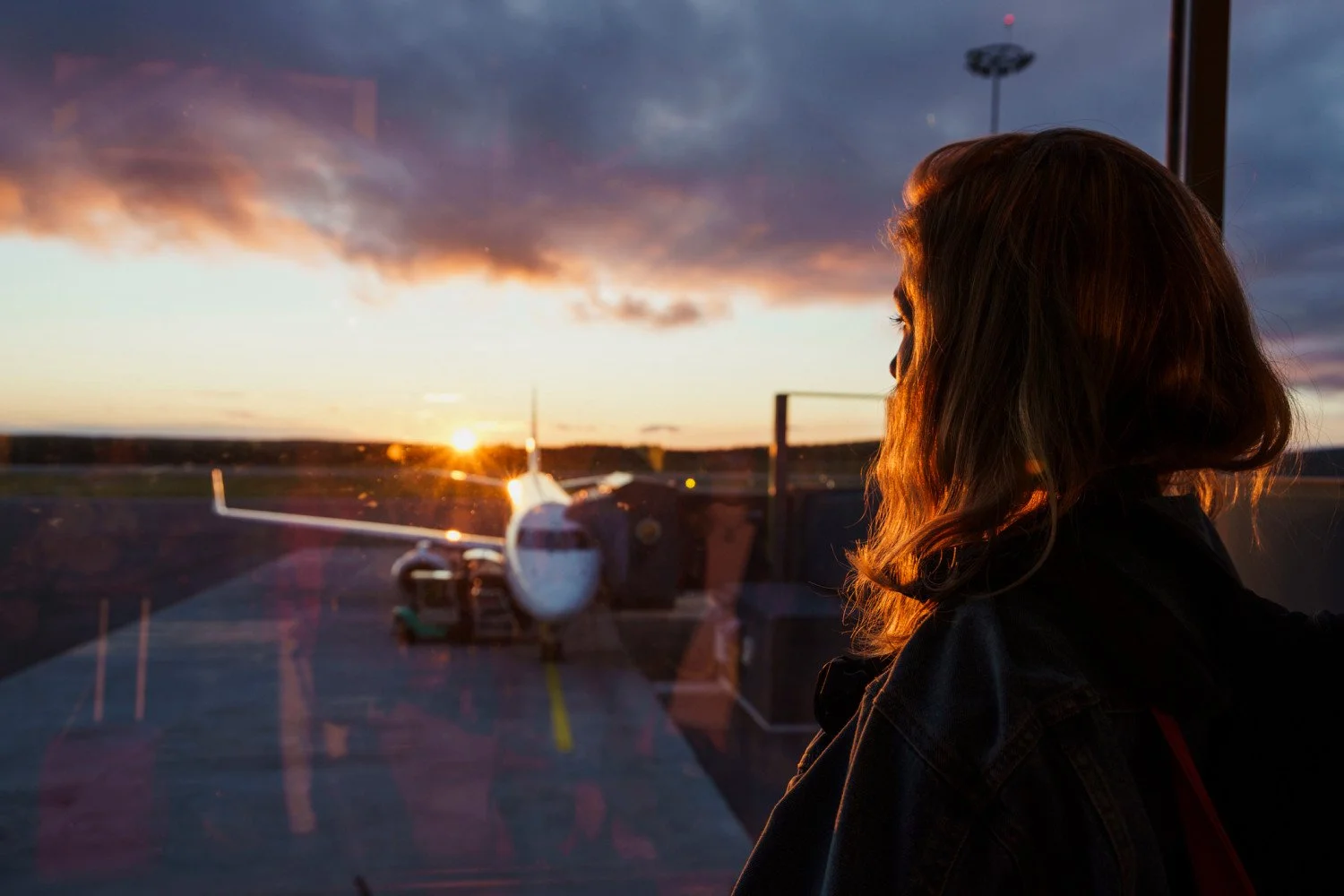Flight anxiety: 10 tips to help you fly with more ease
Conquer flight anxiety with mindful tips and breathing techniques. Whether you're nervous about flying or dealing with aerophobia, we can help you fly worry-free.
Whether it's a much-needed vacation, a business obligation, or an urgent family matter, flying is often an unavoidable part of life. But if you suffer from flight anxiety, it’s more than just a mere inconvenience. For some, it’s a challenge that can significantly limit their travel options and, by extension, their experiences and opportunities.
If this is you, you’re not alone. In fact, an estimated one in three people experience some level of anxiety when it comes to flying. The good news is that there are practical and effective ways to manage your anxiety so you can fly with more confidence and ease.
If in doubt, try our Calming Flight Anxiety meditation series.
What is flight anxiety?
Flight anxiety, also known as aviophobia or aerophobia, is the fear or apprehension that occurs before, during, or even after a flight. And guess what? It's not always about the actual flying part!
For some, the anxiety kicks in the moment they start packing their bags. For others, it’s the confined space, the height, or even the mere thought of not being in control that can trigger symptoms. Knowing the what and why of your anxiety can be a game-changer.
What are the symptoms of flight anxiety?
Symptoms can range from mild to overwhelming and intense. That could mean sweaty palms, increased heart rate, and an overwhelming sense of doom. You might also experience physical discomfort like stomach cramps or nausea. Some people may even experience panic attacks.
Symptoms can kick in at various stages—while booking tickets, upon seeing the plane, or even mid-flight. Recognizing the signs is the first step towards managing your flight anxiety effectively.
Why do people experience flight anxiety?
The reasons people experience flight anxiety can vary from person to person. It could be a past traumatic experience related to flying or a phobia, like acrophobia (a fear of heights), claustrophobia (fear of confined spaces), or germaphobia (fear of germs).
Overhyped news of air travel incidents can also play a part in increasing concerns. Whatever the cause, remember that your anxiety is not a sign of weakness. It’s a psychological response that happens to many people. Luckily, understanding your triggers can empower you to tackle your difficulties and help you prepare for your next jet-setting adventure.
Pre-flight anxiety: 5 breathing techniques to help you stay calm
So, you've booked that ticket, and the day is getting closer. Breathing techniques are your best friend when battling flight nerves, so get started now to help you with anticipatory anxiety. All of these can also be used when you’re on the flight, but practicing now means you’re ahead of the game.
1. Deep breathing
Deep breathing encourages full oxygen exchange, helping to slow down your heart rate and stabilize blood pressure, thereby reducing stress and anxiety.
How to practice:
Sit or lie down in a comfortable position.
Place one hand on your chest and another on your abdomen.
Inhale deeply through your nose, allowing your diaphragm to expand (your abdomen should rise higher than your chest).
Exhale slowly through your mouth.
💙 Looking for a guided breathing practice? Breathe into Relaxation with Jay Shetty. This three minute practice can help you release any mounting pressure.
2. Breath focus
Breath focus combines the benefits of deep breathing with mental concentration, creating a focal point that helps draw your attention away from the anxiety and onto something positive.
How to practice:
Close your eyes and take a few deep breaths.
As you breathe, focus on a particular word or image that brings you calm.
Visualize that word or image as you inhale and exhale.
3. The 4-7-8 breathing technique
The 4-7-8 technique forces your mind to focus on counting and your breath, diverting your thoughts from anxious triggers. The longer exhale acts as a natural sedative.
How to practice:
Close your mouth and inhale through your nose for 4 seconds.
Hold your breath for 7 seconds.
Exhale completely through your mouth for 8 seconds.
4. Alternate nostril breathing
This technique promotes balance and unity of both sides of the brain, contributing to calmness and mental clarity.
How to practice:
Sit in a comfortable position and close your eyes.
Close off your right nostril with your right thumb.
Inhale through your left nostril.
Close off your left nostril with your right ring finger and release your right nostril.
Exhale through your right nostril.
Repeat, alternating nostrils.
5. Enhanced Progressive Muscle Relaxation (PMR)
This method combines physical relaxation with deep breathing, helping to reduce muscular tension that might accompany anxiety.
How to practice:
Begin by tensing up a group of muscles as you breathe in, such as your toes or fists.
Hold for a count of 5.
Exhale and simultaneously release the tension in your chosen muscle group.
Work your way up (or down) your body, focusing on each muscle group on the way.
Incorporating these breathing techniques into your daily routine can work wonders in alleviating anxiety and improving your overall emotional wellbeing. Give them a try and find what works best for you.
Mid-flight anxiety: 5 mindful exercises
You've made it onto the plane and found your seat. But before you start scrolling through the in-flight movies, establish a relaxation game plan.
Mindfulness is a known anxiety and stress-reducer. It’s a great way to center yourself when things get a little bumpy, literally or emotionally. Before you board, make sure you have the Calm app and a selection of breathing and relaxation exercises downloaded to your phone so you can access them offline.
Here are 5 of the best mindfulness exercises you can try before you board and while you're in the air.
1. Visualization
Visualization can be used in the days leading up to the flight. Spend some time imagining a positive travel experience. Picture yourself breezing through security, enjoying your time in the air, and landing safely at your destination. It's like a mental rehearsal for the real deal.
Once you’re on the plane, visualization can transport your mind away from the current stressor—be it turbulence or cramped seats—offering you a mental escape. Imagine yourself in a serene setting that brings you peace—perhaps a beach, forest, or mountain scene.
💙 If you’re hoping to sleep on your flight, you may want to explore A Woodland Stroll to Sleep. This guided visualization is designed to help calm the mind and body and move you towards rest.
2. Guided meditation
Listen to a guided meditation track designed for relaxation or anxiety relief. Guided meditation provides a structured way to enter a state of deep relaxation and focus, making it easier for you to divert your mind away from anxious thoughts.
💙 If you find your mind going into a negative spiral, try to Slow the Swirl in Your Mind.
3. Mindful breathing
Mindful breathing is a basic yet powerful mindfulness technique that can calm your nervous system and divert your mind from any triggers of flight-related stress.
Take a breath in through your nose, hold for a few seconds, and exhale through your mouth. Try to make your exhale longer than your inhale.
💙 We all know how to breathe, but sometimes if we’re nervous, a bit of guidance helps. Explore Guided Breathing with Anna Acton for support.
4. Sounds for relaxation
If you're one for tech and have your smartphone handy, give Calm’s binaural beats a try. These audio tracks produce sounds that are believed to sync with your brain waves, encouraging a state of deep relaxation. Just remember those noise-canceling earbuds to keep out the noise of the engine (and because fellow passengers might be hoping for a peaceful flight).
💙 Different types of sounds may be relaxing for you mid-flight. You can try a soothing soundscape like An Evening in Jasmine’s Garden, or relaxing ambient noise like, White Noise Ocean Surf.
5. Post-flight journaling
Debriefing post-flight can be helpful. It’s so easy to focus on our fears and anxieties, but it’s even more powerful to focus on what went well!
Jot down what worked for you and what didn’t. Did that breathing technique make you feel relaxed, or was something else more helpful? Your experiences, penned down, become invaluable insights for future flights. Plus, putting words to your feelings can make them more manageable, taking the edge off any residual anxiety.
💙 Calm offers a variety of downloadable journals that can help you explore and process your feelings.
So, the next time you're about to take off or find yourself tensing up in your seat, remember these handy mindfulness exercises. Conquering flight anxiety is an ongoing process. But, with the right tools, tips, and plenty of self-compassion, you're well on your way to finding flight a more comfortable experience.
If the fear is still paralyzing, it might be time to seek professional help. Therapists specializing in anxiety disorders or phobias can provide coping mechanisms tailored just for you. Cognitive Behavioral Therapy (CBT), for instance, has proven effective for many in treating specific phobias like aviophobia. And some airlines run their own courses for nervous flyers.
Remember, asking for help is a proactive step toward better wellbeing and the freedom to fly wherever, whenever you want.
Flight anxiety FAQs
Q: Curious about why you shouldn’t fear flying?
Flying is one of the safest forms of transportation available today. According to aviation statistics, the odds of being in an aviation accident are extremely low, much lower than car travel. Advances in technology, rigorous safety protocols, and extensive training for pilots and crew all contribute to this high level of safety. Understanding these facts can often help alleviate some of the fear associated with flying.
Q: Why do I have such bad anxiety about flying?
Flight anxiety can stem from various factors, including a fear of enclosed spaces (claustrophobia), a lack of control, or even past traumatic experiences related to flying. For some, the fear is more generalized, without a single identifiable source.
Q: Is fear of flying a mental illness?
Fear of flying, also known as aviophobia, is not a mental illness but is categorized as a specific phobia under anxiety disorders in the Diagnostic and Statistical Manual of Mental Disorders (DSM-5). If the fear significantly impacts your life and wellbeing, it's advisable to consult a healthcare professional for an accurate diagnosis and appropriate treatment options.
Q: How common is airplane anxiety?
Airplane anxiety is quite common, affecting a significant portion of the population to varying degrees. Studies suggest that anywhere from 2.5% to 40% of people experience some level of anxiety related to flying. The severity can range from mild nervousness to debilitating fear that prevents individuals from flying altogether.
If you find yourself struggling with flight anxiety, know that you're not alone, and there are multiple resources and techniques available to help you manage your fears. Start with our Calming Flight Anxiety meditation series.
Calm your mind. Change your life.
Mental health is hard. Getting support doesn't have to be. The Calm app puts the tools to feel better in your back pocket, with personalized content to manage stress and anxiety, get better sleep, and feel more present in your life.











